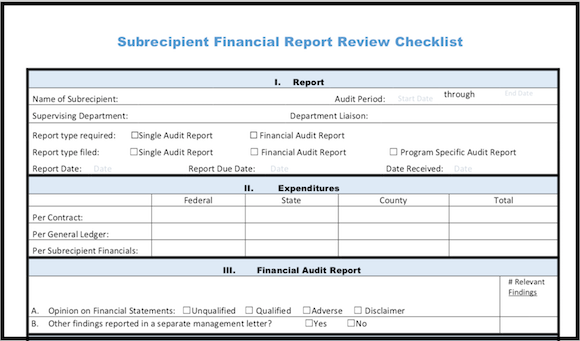|
In our previous two blog posts, we discussed how to prepare for and conduct physical observation of capital assets. In this post, we discuss some of the common challenges (aka “sticky wickets”) that you will likely come across during the observations and the subsequent reconciliation of the results to the accounting records. We also provide suggestions about how to address each of the sticky wickets. 1. Unlocated Assets
The most common challenge in inventorying capital assets occurs when an asset listed in the accounting records cannot be found by departmental personnel.
This happens for one or more of the following reasons:
When this happens, you will need to gather further information to allow you to decide how to adjust the accounting records. Specifically, ask these questions:
Sometimes, when you ask these questions, department personnel cannot answer them. What do you do then? How much time and effort should you put in with further research? This depends on:
In these cases, you will just need to write the asset off. If you can’t find it, you can’t leave it capitalized in the accounting records.
Click here to see a Sample Fixed Asset Disposal Form (click the link to view and download in Excel-format) to use to document approvals for Accounting to write off an unlocated asset.
2. Unrecorded Assets
You will undoubtedly find assets that are not listed in the accounting records. When this happens, you will need to gather information to know whether/how to record these assets. Ask the following questions:
It may be difficult to determine whether an unrecorded asset is in fact not capitalized because:
If this happens, use this Sample Fixed Asset Addition Form (click the link to view and download in Excel-format) to document approvals for Accounting to add an unrecorded asset to the accounting records. 3. Asset Identification Tags
If assets aren’t already tagged, you will need to decide whether to tag them as they are being observed. Once an asset is tagged, it is easier to identify it during future observations. If assets are already tagged, you will likely find some during your observation that are not tagged. This can be because the tag fell off, was defaced or never affixed.
You will need to decide what assets should be tagged. Generally, you should tag equipment, especially moveable equipment. These are the hardest assets to keep track of and the easiest to be stolen. Generally, the following types of assets are not tagged: intangibles including software, infrastructure and buildings. You will need to decide whether to tag other assets, such as vehicles, weapons, furniture, immoveable equipment, child assets, and assets under capitalization thresholds. 4. Parent / Child Relationships
Many line items in accounting records are not separate assets in their own right. Most modern accounting systems have the capability of linking a child asset to its parent via a Parent ID Number field. The parent and child assets should be observed together. Therefore, you will want to identify parent and child relationships for the observations.
Examples of parent and child assets are:
5. Transfers
When you find an asset during the observations that is not on the asset list, you frequently get this reaction from department personnel:
Dog: “It's not mine I. I don't know where it came from... HONEST!”
Situations that can lead to assets being recorded in the wrong department include:
If this happens, see this Sample Fixed Asset Transfer Form (click the link to view and download in Excel-format) that can be used to document approvals before Accounting records a transfer. 6. Non-Cap Assets
The Government Finance Officers Association’s Recommended Practices for Capital Asset Management suggest that capital assets with values less than the capitalization thresholds be tracked at the discretion of the departments.
Also, some governments have policies that require tracking of certain assets regardless of value, such as weapons & IT assets. Departments would use their discretion to decide which small assets to track based on the following considerations:
7. Assets Held by Others, or Assets Owned by Others
It will be helpful to identify any assets that are not on-site before beginning the observations. You may need to arrange an observation with another organization or obtain a written confirmation of assets they have in their possession.
Examples of assets not on-site are:
It will also be helpful to identify any assets on-site that are not owned. In these cases, you will need to make sure not to capitalize them as unrecorded assets. Examples of unowned assets are:
A well-planned physical observation of capital assets will avoid most of these “sticky wickets.”
Please also visit our Resources page for a collection of all of our attachments and templates, as well as a link to a recent presentation for inventorying capital assets.
If you have more questions related to inventorying capital assets, feel free to reach out to Kevin directly:
Kevin Harper, CPA kharper@kevinharpercpa.com (510) 593-503
If you'd like to get more free tips, as well as downloadable tools and templates for your agency, please join our mailing list here!
(We’ll send you a monthly curated selection of our blog posts. You can unsubscribe at any time.) |
The Government Finance and Accounting BlogYour source for government finance insights, resources, and tools.
SEARCH BLOG:
Meet the AuthorKevin W. Harper is a certified public accountant in California. He has decades of audit and consulting experience, entirely in service to local governments. He is committed to helping government entities improve their internal operations and controls. List of free Tools & Resources
Click here to see our full list of resources (templates, checklists, Excel tools & more) – free for your agency to use. Blog Categories
All
Need a Consultation?Stay in Touch! |
Search Across Entire Site:
HELPFUL LINKS:
|
461 2nd Street, #302
San Francisco, CA 94107 (510) 593-5037 KHarper@kevinharpercpa.com |





 RSS Feed
RSS Feed